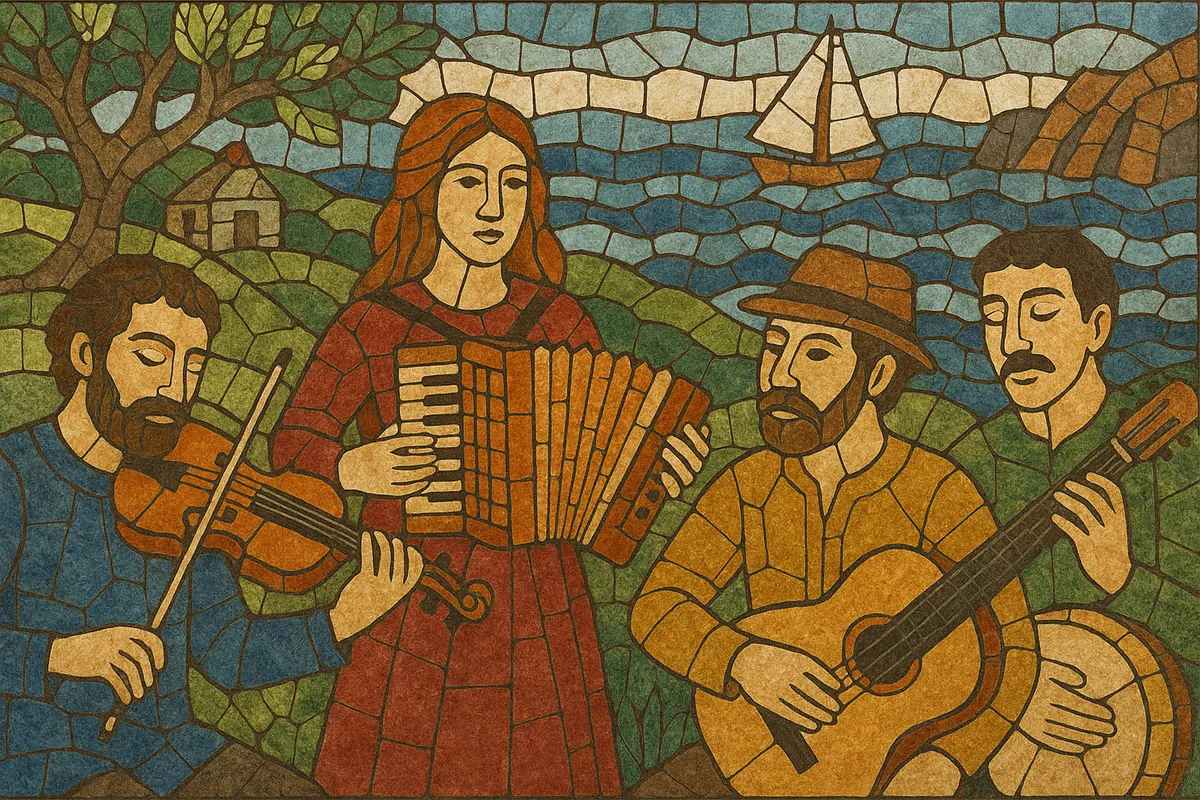
Cornish folk music is the traditional music of Cornwall, a Celtic region of the far southwest of Britain. It blends the shared British dance‑tune repertory with distinctly Cornish melodies, processional "furry" dances, mining and maritime songs, and pieces in the revived Cornish language (Kernewek).
The style is built around strong, singable melodies, driving dance rhythms, and modal inflections (Dorian and Mixolydian are common). Typical instruments include fiddle, melodeon/accordion, concertina, guitar or bouzouki, and frame drum (the crowdy-crawn). In modern dance settings (Nos Lowen and Troyl), bands may play extended tune-sets for social dances that echo both English ceilidh and Breton fest-noz energy. Themes often reflect Cornwall’s tin-mining heritage, seafaring life, seasonal customs (such as May Day), and local legends.
Cornish folk music has medieval and early-modern roots in processional and community dance traditions (e.g., the Helston Furry Dance) and local seasonal customs. In the 1800s, antiquarians such as Davies Gilbert and William Sandys published collections of Cornish songs and carols, helping to document a distinct repertory tied to parish life, chapel singing, and community festivities. Cornwall’s maritime economy and tin-mining culture also shaped a corpus of occupational songs and ballads.
Following broader British folk revivals, Cornish traditions were reanimated mid‑century through village bands, dance clubs, and festival stages. Community events like Padstow’s Obby Oss and Penzance’s Golowan kept ceremonial music alive, while local choirs and carol traditions flourished. From the 1960s onward, performers began integrating revived Cornish language song, and scholars and musicians worked to reconstruct and promote Cornish instruments (notably the Cornish bagpipes). The founding of festivals such as Lowender Peran deepened links with other Celtic regions, especially Brittany, reinforcing shared dance-music aesthetics.
Since the late 1990s and 2000s, the Nos Lowen movement (“happy night”) helped define a modern, dance-forward Cornish sound: groove-driven, modal tune-sets for social dancing, often influenced by Breton fest‑noz arrangements while remaining rooted in local repertory. Parallel Troyl nights (ceilidh-like community dances) continue older set-dance formats with a caller. Contemporary artists write new Kernewek and English songs, revive archival material, and adapt maritime and mining themes for the stage. Today the scene spans intimate sessions, dance nights, choirs and carol services, and festival performances—locally in Cornwall and throughout the Celtic network.

